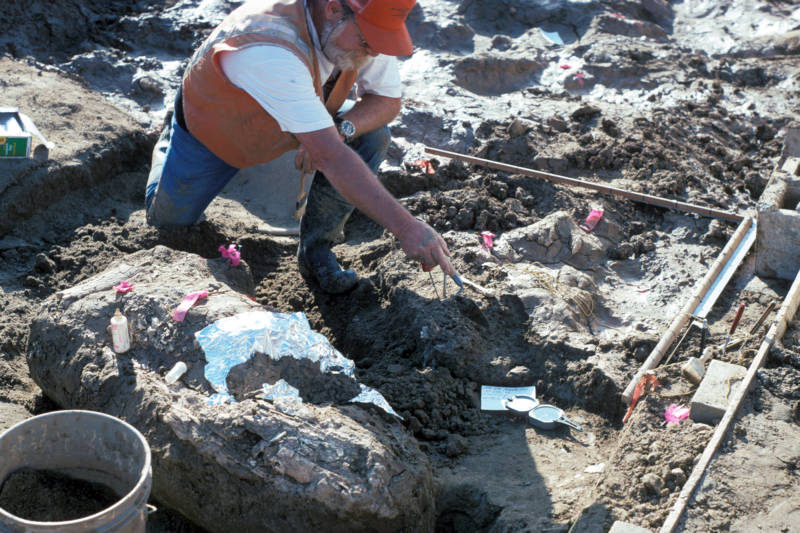Researchers in Southern California say they've uncovered evidence that humans lived there 130,000 years ago.
If it's true, it would be the oldest sign of humans in the Americas ever — predating the best evidence up to now by about 115,000 years. And the claim has scientists wondering whether to believe it or not.
In 1992, archaeologists working a highway construction site in San Diego County found the partial skeleton of a mastodon, an elephant-like animal now extinct. Mastodon skeletons aren't so unusual, but there was other strange stuff with it.
"The remains were in association with a number of sharply broken rocks and broken bones," says Tom Deméré, a paleontologist at the San Diego Natural History Museum. He says the rocks showed clear marks of having been used as hammers and an anvil. And some of the mastodon bones as well as a tooth showed fractures characteristic of being whacked, apparently with those stones.
It looked like the work of humans. Yet there were no cut marks on the bones showing that the animal was butchered for meat. Deméré thinks these people were after something else. "The suggestion is that this site is strictly for breaking bone," Deméré says, "to produce blank material, raw material to make bone tools or to extract marrow." Marrow is a rich source of fatty calories.

The scientists knew they'd uncovered something rare. But they didn't realize just how rare for years, until they got a reliable date on how old the bones were by using a uranium-thorium dating technology that didn't exist in the 1990s.

9(MDAxOTAwOTE4MDEyMTkxMDAzNjczZDljZA004))